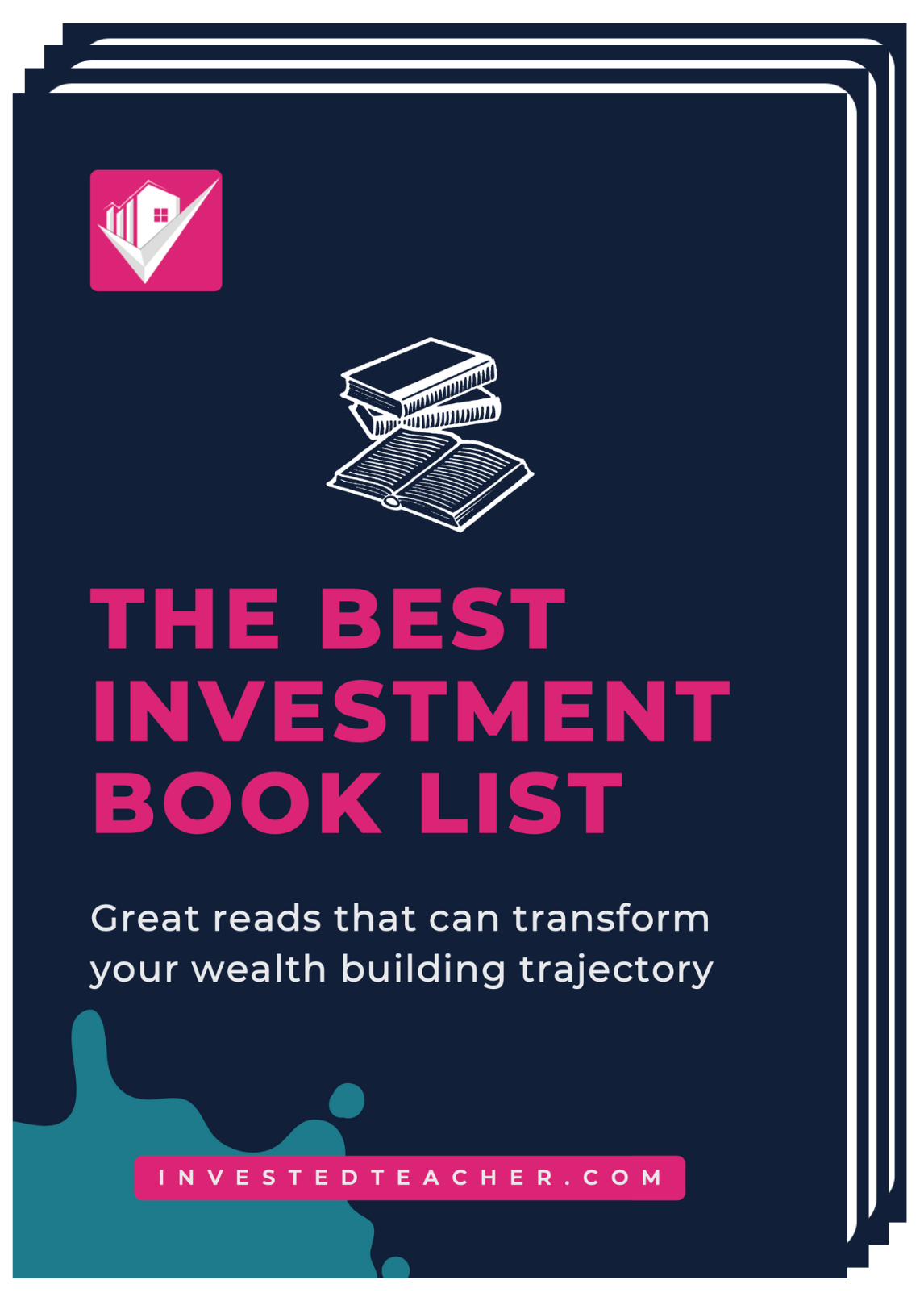Your Canadian Portfolio Rate of Return Reality Check [Secret Sauce Ep7]
Listen here on our website:
Or jump to this episode on your favourite platform:
Watch Now!
Are you aware of the true rate of return on your Canadian portfolio, or have you been misled by common myths?
Many Canadian investors are lulled into a false sense of security, believing that their portfolios are achieving high returns, often citing figures like 12% annually. However, the reality is far more complex and less optimistic for the majority. This episode delves into the truth behind these figures, exposing how typical portfolios, especially those with a mix of equities and fixed income, rarely reach such high returns. Understanding the actual performance of your investments is crucial for planning your financial future accurately.
With this insight, you’ll be better equipped to assess your current portfolio’s performance and make informed decisions moving forward. Whether you’re aiming for steady growth or preparing for retirement, knowing the real rate of return on your investments is essential. This episode breaks down the misconceptions and provides clear guidance on how to evaluate and optimize your portfolio’s performance effectively.
- Learn how to accurately calculate the true rate of return on your investments.
- Understand the impact of fixed income assets on your overall portfolio performance.
- Discover strategies to optimize your portfolio for better returns in the Canadian market.
Tune in to our latest episode to uncover the real performance of your Canadian portfolio and start making smarter investment decisions today!
Resources:
- Why Permanent Life Insurance Isn’t Right For Most People
- Dig into our Ultimate Investment Book List
- Book a Discovery Call with Kyle to review your corporate (or personal) wealth strategy to help you overcome your current struggle and take the next step in your Canadian Wealth Building Journey!
- Follow/Connect with us on social media for daily posts and conversations about business, finance, and investment on LinkedIn, Instagram, Facebook [Kyle’s Profile, Our Business Page], TikTok and TwitterX.
Looking for a new mortgage, renewal, refinance, or HELOC? Reach out to Jon to share some options.
Calling All Canadian Incorporated Business Owners & Investors:
Consider reaching out to Kyle if you’ve been…
- …taking a salary with a goal of stuffing RRSPs;
- …investing inside your corporation without a passive income tax minimization strategy;
- …letting a large sum of liquid assets sit in low interest earning savings accounts;
- …investing corporate dollars into GICs, dividend stocks/funds, or other investments attracting cordporate passive income taxes at greater than 50%; or,
- …wondering whether your current corporate wealth management strategy is optimal for your specific situation.
By hopping on a discovery call with Kyle, he will review your specific personal and corporate financial situation in order to determine if there are some quick wins available for you to minimize taxes personally or corporately, provide ideas for how you can increase your personal cash flow, and ensure that the net worth of your estate continues to grow in tandem.
On the Canadian Wealth Secrets Podcast, we routinely discuss Canadian investment portfolios, rates of return, Canadian real estate, incorporated business owners, corporate wealth management, participating whole life insurance, infinite banking, bank on yourself and much more!
Transcript:
Hey there, Canadian Wealth Secret seekers.
Today’s secret sauce episode is a little bit of a reality check episode, and it might sound harsh, but it’s actually important for you to know and understand if you want to be preparing for your financial future, if you wanna find that personal Belize that you’re after.
Now, the Dave Ramseys and the Susie Ormans of the world are consistently touting about index funds or even mutual funds that have 12% returns, which in reality is a lie for like 99% of investors who are out there. You know, if they’re following their investment advisor’s advice and making sure they have some sort of diversification and fixed income portion to their portfolio, their entire portfolio is not likely going to be returning something like 12%. You know, for some of us, you might have 50%, you know, a 50-50 mix or maybe even like a 75-25 split through mutual funds or a mix of stocks and so forth. The reality is the other 25 to 50% of your portfolio is likely in some sort of fixed income or balanced type funds that is potentially weighing down your returns, not even potentially, it probably is.
And when we do this, why we’re doing it is because it’s probably less likely for those parts of your portfolio to go down as aggressively as maybe some of the equity parts of your portfolio. Alright, so let’s just consider this for a second. Let’s assume that, you know, a portion of your portfolio actually does return an average of 12% annually over the long run. And your fixed income portion of your portfolio returns say an average of 4%. You know, if you have a 50-50 mix, then you’re looking at about an 8% return on average. That’s actually not a bad average, but remember it’s only an average, and some years it’s gonna be higher and some years it’s gonna be lower, right? And much, much lower, um, based on those equities if they go up or go way down in a given year. So on average it might be 8%.
So now, while this sounds like a decent average rate of return, never have I ever reviewed a client’s investment portfolio and found them to be truly earning 12% on their entire portfolio, and of course, not consistently either, right? I have seen it in some cases, but it’s usually a portion of the portfolio. Sometimes I’ll see even a higher number, maybe 16% on a portion of the portfolio, but then other parts of the portfolio are earning much less and sometimes even negative returns, right? So if you really look to balance this thing out, thinking that you’re gonna be returning 12% without having some sort of really specific strategy in place, or someone who’s consistently beating the market, which we know stats tell us is very difficult to do, I’m sure there’s somebody out there who can or does do it. The reality is that the portfolios that I see and review for so many people, including many of the Canadian wealth secret seeker audience like you, are actually somewhere in the lower ranges. I’ve even seen someone who had a five-year return of 1.84% in their RRSP. They had no clue what the return was. They just were sending it, and it was in a very, very conservative balanced fund.
So the reality is that unless you really know what you are in and what the historical returns are, it’s very difficult for you or anyone in your life to be able to help you with planning what that might look like or sound like, or how much you should be considering contributing to your investment portfolio in order to reach your financial freedom goals. Alright? So the reality is that, even though we can look to the historical returns, we can look to the data, and usually that can tell us rationally what we should do, but unfortunately, we are humans and we are very emotional, right? When times are good, people are excited, they’re eager to be aggressive. This just happened during COVID for a lot of people. However, the more majority of the population gets very scared when times are bad and tend to pull money out of the markets, especially equity markets, when things are down, and that leaves them further behind and sometimes even further behind them when they even started.
And that’s obviously completely against what we should be doing. However, we still seem to do it right? So think of it this way, we all know we should probably eat less and exercise more, but sometimes we don’t do that, right? We know that if we went to school longer, got an extra degree, went to med school, like we did all these other things, then maybe we can earn a greater salary for the duration of our life. A lot of people struggle to do some of those things. The same is true when it comes to investing, right? We should be building a high equity-based portfolio, and I would argue historically based on primarily US equities, and we shouldn’t stock pick. However, people don’t follow what they know or what they should be doing. And let’s be honest and say that many of us don’t have that same risk tolerance or emotional strength to handle the ups and downs.
So if that’s you, what I want you to be thinking about in this week’s Canadian Wealth Secrets secret sauce episode is to be considering what percentage of your portfolio should be in a safe asset, especially if you’re getting similar returns with more market risk currently. More importantly, you should be taking inventory of what you’ve been invested in until now and get your head wrapped around what those average returns have looked like over the last 3, 5, 10 years. And of course, the lifetime of your accounts. Are you telling yourself a story that the average rate of return is 10% for you and your portfolio based on the S&P 500 index in the US but you’re 80% invested in Canadian balanced mutual funds or some sort of equity fund that’s only earning say, three or 4%, right? So knowing and being aware of where your money is and what it’s invested in is really important. Alright? So today’s secret sauce episode is not meant to be a judge of what you’re doing, but rather to nudge you towards building that awareness of what you’re investing in, understanding the historical rate of returns those investments typically yield, and to have you base your expectations on those decisions. You’re not good or bad if your average rate of return is 8% or 4% or 16%. The reality is, you need to at least come to terms with what has it been historically and what do I want to do in order to set myself up moving forward?
I meet with a lot of clients who do not wanna see their dollars go backwards. Those are the types of people that might want to have a heavier weighting in something like a permanent insurance policy, like a participating whole life insurance policy. For others, they just want the greatest return. Well, let’s look to the US equity market. Let’s get you in ETFs and index funds that are going to help you follow historic trends. And if you’re like me and you are bullish on the US market, then probably pretty safe moving forward as well. Decide who you are and what you should be investing in, and then we can back map from there to help you reach those goals instead of using that hope and pray model.
So if you’re looking for someone, an accountability partner, that you’d like to take a quick peek at what you’re doing, what your plans are, what your goals are, and what your risk tolerance looks and sounds like, feel free to reach out to us. Maybe there’s an opportunity for you to have some of those assets into something that’s a little lower risk or risk off, and you aren’t sure what to do or where to put those funds. Consider reaching out to us over at canadianwealthsecrets.com/discovery so we can help you determine what is your next move in your personal or corporate wealth management journey. If you’re an incorporated business owner, we specialize in helping you to rescue retained earnings from the punitive high personal taxes that you experience when you take out large salaries or dividends in any given year. So if that’s you, feel free to reach out.
Canadian Wealth Secrets is an informative podcast that digs into the intricacies of building a robust portfolio, maximizing dividend returns, the nuances of real estate investment, and the complexities of business finance, while offering expert advice on wealth management, navigating capital gains tax, and understanding the role of financial institutions in personal finance.
"Education is the passport to the future, for tomorrow belongs to those who prepare for it today.”
—Malcolm X

Design Your Wealth Management Plan
Crafting a robust corporate wealth management plan for your Canadian incorporated business is not just about today—it's about securing your financial future during the years that you are still excited to be working in the business as well as after you are ready to step away. The earlier you invest the time and energy into designing a corporate wealth management plan that begins by focusing on income tax planning to minimize income taxes and maximize the capital available for investment, the more time you have for your net worth to grow and compound over the years to create generational wealth and a legacy that lasts.
Don't wait until tomorrow—lay the foundation for a successful corporate wealth management plan with a focus on tax planning and including a robust estate plan today.
Insure & Protect
Protecting Canadian incorporated business owners, entrepreneurs and investors with support regarding corporate structuring, legal documents, insurance and related protections.
INCOME TAX PLANNING
Unique, efficient and compliant Canadian income tax planning strategy that incorporated business owners and investors would be using if they could, but have never had access to.
ESTATE PLANNING
Grow your net worth into a legacy that lasts generations with a Canadian corporate tax planning strategy that leverages tax-efficient structures now with a robust estate plan for later.
We believe that anyone can build generational wealth with the proper understanding, tools and support.
OPTIMIZE YOUR FINANCIAL FUTURE



